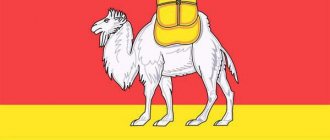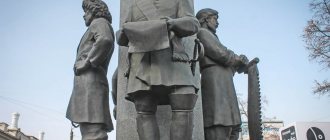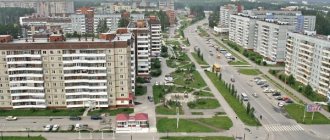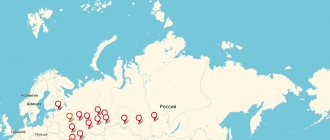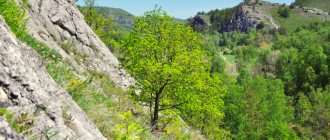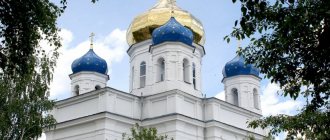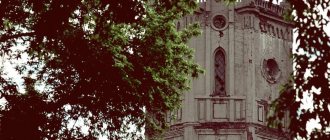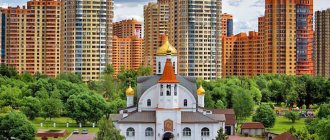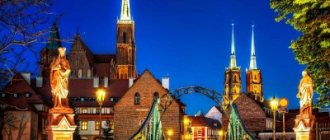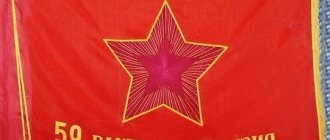What is the winteriest city in the Chelyabinsk region? Of course, my beloved Kyshtym. After all, even the name translates as “quiet winter hut.”
It’s truly quiet and peaceful here. And very interesting. The town is ancient. It was formed in the 18th century in connection with the construction of a factory. More precisely, there were two factories here: the Verkhne-Kyshtym iron foundry and the Nizhne-Kyshtym ironworks .
Temples of Kyshtym
When entering the city we immediately see 2 ancient temples. Khristorozhdestvensky is 100 years younger than the city. He is 162 years old. Currently under reconstruction.
The oldest stone building in Kyshtym is the Temple of the Descent of the Holy Spirit . Built in 1764. I have seen so much in two and a half centuries. Emelyan Pugachev kept horses and burned fires in it . In Soviet times, warehouses, a city museum, a printing house, and film distribution were located here.
Now the temple is being restored.
Temple of the Descent of the Holy Spirit
The White house
And on the other side of the pond is the main attraction of the city - the White House . The estate of the breeder Demidov .
The White house. Nearby is an old cast-iron fountain
Built in 1757. At first, the owners and managers of the plant lived here. , a museum of minerals, ores and artistic castings was created . Mendeleev visited him . I was very surprised and praised.
During Soviet times, the house housed various government institutions: a vocational school, a nursing school, a house of pioneers, and again a museum. The estate is currently undergoing restoration. We can't wait to take a walk inside.
The breeders knew where to build their home. Through the windows you can see a picturesque pond with ducks. And a wonderful park. The trees here are simply huge. They can only be grasped by three or four of us holding hands together.
Park of the Demidov estate. Bicentennial poplars and lindens
There are many legends about underground passages under the estate and even under the pond. And treasures hidden there. But so far no one has been able to discover them.
Map
| Kyshtym: maps |
Kyshtym: photo from space (Google Maps) Kyshtym: photo from space (Microsoft Virtual Earth)
| Kyshtym. Nearest cities. Distances in km. on the map (in brackets along roads) + direction. Using the hyperlink in the distance , you can get the route (information courtesy of the AutoTransInfo website) | |||
| 1 | Ozyorsk | 11 (19) | NE |
| 2 | Novogorny | 16 (26) | SE |
| 3 | Kasli | 23 (27) | NE |
| 4 | Argayash | 30 (44) | SE |
| 5 | Karabash | 32 (48) | SW |
| 6 | Verkhniy Ufaley | 43 (45) | NW |
| 7 | Snezhinsk | 44 (69) | WITH |
| 8 | Roschino | 62 () | SE |
| 9 | Kunashak | 62 (164) | IN |
| 10 | Dolgoderevenskoe | 62 (64) | SE |
| 11 | Nyazepetrovsk | 70 (89) | NW |
| 12 | Miass | 77 (104) | YU |
| 13 | Chebarkul | 80 (124) | YU |
| 14 | Poletaevo | 81 () | SE |
| 15 | Zlatoust | 81 (125) | SW |
| 16 | Kusa | 81 (159) | SW |
| 17 | Chelyabinsk | 81 (84) | SE |
| 18 | Polevskoy | 86 (111) | WITH |
| 19 | Sysert | 90 (106) | WITH |
| 20 | Kopeisk | 94 (99) | SE |
| 21 | Miasskoe | 96 (120) | SE |
| 22 | Pervomaisky | 100 () | YU |
| 23 | Novobelokatay (Republic of Bashkortostan) | 100 () | Z |
| 24 | Rose | 104 () | SE |
| 25 | Korkino | 105 (116) | SE |
| 26 | Berdyaush | 106 (196) | SW |
| 27 | Mountain Shield (Sverdlovsk region) | 110 () | WITH |
| 28 | Zauralsky | 110 (131) | SE |
| 29 | Bobrovsky (Sverdlovsk region) | 111 (128) | WITH |
| 30 | Aramil | 112 (144) | WITH |
a brief description of
Located on the eastern slope of the Middle Urals, among numerous lakes, near the sources of the river. Techa (Ob basin), 90 km northwest of Chelyabinsk. Railway station.
The climate is continental. Winter is cold, the average temperature in January is -16. Summer is warm, the average temperature in July is about +18. Precipitation is about 400 mm per year.
In the vicinity of Kyshtym, in a coniferous forest, on the southeastern shore of a picturesque lake, there is the climatic and balneological resort of Uvildy (founded in 1944).
Territory (sq. km): 764
Information about the city of Kyshtym on the Russian Wikipedia site
Historical sketch
Founded in 1757 in connection with the construction of the Verkhne- and Nizhne-Kyshtym iron foundries and ironworks, named after the river. Kyshtym. Hydronym of Turkic origin, possibly from the term kyshtym - that was the name of the Kyrgyz tributaries; the same name was also used as an ethnonym. It is also possible to form from the Bashkir kyshtanym “winter”, kyshtau “wintering”.
In the 18th-19th centuries. The Kyshtym factory village becomes the center of one of the richest mountain districts.
At the beginning of the 20th century. the production of ferrous metals was curtailed, a copper-electrolyte plant was created on the basis of the Nizhnekyshtym plant, and the Verkhnekyshtym plant temporarily became a copper smelter (since 1930 - mechanical, since 1964 - machine-building).
Workers' settlement from 04/05/1926 City from 12/20/1934
Culture, science, education
Historical Museum.
Universities of the city
Branch of the South Ural State University in Kyshtym
456873, Chelyabinsk region, Kyshtym, st. Konoplyanka, 2
Museums, galleries, exhibition halls
Kyshtym Historical and Revolutionary Museum 456870, Chelyabinsk region, Kyshtym, sq. Karla Marksa, 2
Architecture, sights
The historical center of the city was formed on the site of the village of the former Verkhnekyshtym plant, where administrative buildings are located along the banks and on the islands of the plant pond. Among the architectural monuments are the so-called. The White House is the former residence of Kyshtym factory owners (first half of the 19th century) and 2 churches (18th and 19th centuries).
| Population by year (thousands of inhabitants) | |||||||
| 1931 | 26.7 | 1996 | 41 | 2008 | 40.2 | 2017 | 37.5 |
| 1939 | 27.8 | 1998 | 40.7 | 2010 | 39.8 | 2018 | 37.0 |
| 1959 | 34.3 | 2000 | 40.1 | 2011 | 38.9 | 2019 | 36.4 |
| 1967 | 36 | 2001 | 39.8 | 2012 | 38.7 | 2020 | 36.2 |
| 1970 | 36.1 | 2003 | 41.9 | 2013 | 38.6 | 2021 | 35.9 |
| 1979 | 39.8 | 2005 | 41.0 | 2014 | 38.5 | ||
| 1989 | 42.9 | 2006 | 40.8 | 2015 | 38.0 | ||
| 1992 | 42.7 | 2007 | 40.4 | 2016 | 37.8 | ||
Hospital
We will cross the bridge to the other side of the pond. Immediately in front of us is the Hospital .
The building was built as a hospital. It turned out beautiful. The breeders thought that it would be a pity to give such a good house to a hospital. And they set up a gambling house in it for the entertainment of the gentlemen - fun, dancing, cards, roulette. In 1860, the first floor was a hospital inpatient unit, and the second floor was used to receive and entertain visiting guests.
In 1991, the film “The Governor” about the first Russian revolution was filmed here. The role of the governor's house was played by the Kyshtym hospital. And the Kyshtym residents themselves performed in the crowd scenes. On this occasion, they found things from the early twentieth century in their grandmother’s chests.
People's House
Let's turn right and walk along the new beautiful embankment to the People's House .
It was built to organize healthy and sober leisure for the townspeople. There was a library, a choir, a folk theater, and a string orchestra of workers and employees of an iron foundry. The People's House recently opened after restoration. Now festivals, concerts and weddings are held here.
Motor ship "Raketa-248"
And now I propose to go down to the area of the Nizhne-Kyshtym plant . There is also a lot of interesting things here. Not far from the railway station there is a beautiful Cathedral Mosque . A little further is an open-air museum of military equipment . Real T-34 tank, MiG-27 fighter, anti-aircraft gun and S-200 missile system.
Nearby is the Palace of Culture and the Church of St. Nicholas the Wonderworker .
Kyshtym. Church of St. Nicholas the Wonderworker
But I want to tell you about the motor ship Raketa-248 .
The motor ship "Raketa-248" was delivered in 1995 using a Mi-26 helicopter. The plant paid 50 million rubles to the shipping company and 200 helicopter pilots for delivery...
to the shore of the Nizhnekyshtym pond in 1995. From the Kama River Shipping Company using a Mi-26 helicopter. Having paid 50 million rubles to the shipping company and 200 helicopter pilots for delivery, the Raketa was bought by the Kyshtym Copper-Electrolyte Plant . Guess why? Under the bar-restaurant "Champion"! Things didn't go well for the establishment. And now it doesn't work. But the story is certainly impressive.
But the plant, owned by RMK, is doing well. Among other things, it produces gold and silver bars.
Economy and industry of Kyshtym
There are more than 50 organizations related to the mining, engineering and metallurgical industries in the city.
Among the large enterprises it is worth noting:
- Kyshtym copper-electrolyte plant, producing high-purity cathode copper.
- OJSC "Xanta" produces the raw materials necessary for the production of rubber, fabrics and cardboard.
- Russian Quartz produces quartz concentrate.
- LLC "Steklandiya" is an enterprise producing glass products.
- Abrasive.
There is also a shoe factory and a furniture factory in the city. Among the confectionery companies, Russian Gingerbread LLC and the Slavura factory stand out.
Sugomaksky natural complex
In addition to historical attractions, there are many natural monuments around Kyshtym. The Sugomak natural complex is very popular among the residents of the Urals .
of Lake Sugomak shines through the pine forest . It's nice here in the summer, with a tent.
The Sugomak cave is widely known - one of the few formed in marble rock. Accessible even to children. In winter you can see stalactites and stalagmites.
The Sugomak cave is one of the few formed in marble rock. Accessible even to children.
Every year in June, on Maryina Polyana , near the cave, the All-Russian folk art festival “Russian Round Dance” .
And in 2010, 6 thousand Kyshtym residents joined hands and created the longest 5-kilometer round dance the Guinness Book of Records
Kyshtym - a city on the spurs of the Urals
Welcome to Kyshtym!
The city of Kyshtym is located in the northern part of the Chelyabinsk region on the eastern slopes of the Ural Mountains. The villages of Taiginka, Slyudorudnik, Bolshie Egusty, Uvildy, Severny and others are municipally subordinate to the city. There are a total of 14 settlements in the district. Kyshtym borders on the cities of Ozyorsk, Kasli, Karabash and the village of Argayash.
Natural features of Kyshtym
Kyshtym is the administrative center of the Kyshtym urban district, the area of which is 76,366 hectares, including the total area of specially protected natural areas - 3,150 thousand hectares. The forest cover of the district is more than 70 percent. The landscape of the area is a zone of mountain forests, mainly coniferous. There are many lakes in the administrative territory of the district: Uvildy, Irtyash, Akakul, Anbash, Sazanovo, Sugomak, etc. The Novo-Kyshtym Reservoir was created on the Kyshtym River, which is part of a cascade of water transfer from the Dolgobrod Reservoir to the city of Chelyabinsk. The Sugomak Cave, located five kilometers from the city, has been declared a natural monument. The Sugomak natural-territorial complex is a creation of nature that is unique in its beauty and picturesqueness. It is located on a vast territory in the northwest of Kyshtym. It includes the Egoza and Sugomak mountains, Lake Sugomak, Naked Hill, and Sugomak Cave.
Kyshtym. View of the Sugomak and Egoza mountains.
Mount Sugomak is the second highest mountain (591 meters) on the western horizon of Kyshtym, the most famous and most often visited by tourists. Lake Sugomak is a natural monument of regional significance, a reservoir of the first category, located at the foot of the Sugomak Mountains, two kilometers west of Kyshtym. This is the source of the city's drinking water supply. The Sugomak karst cave is the only one in the Urals formed by water in marble rock. There are very few such caves in Russia. Located five kilometers from the city of Kyshtym. Since 1985, the Sugomak Cave has been given the status of a natural monument. The Sugomak clearing, where the cave is located, is a favorite vacation spot for residents of the district and tourists from different regions. The annual regional folk art festival “Russian Round Dance” is held here. Among the striking sights of Kyshtym are also Maryina Polyana and the spring of Maryina Tears, Stone Gate - a rock of an outlandish shape, located near the village of Bolshiye Egusty, Dunkin's chest and Samsonkin's coffin - natural stone sculptures located on the border of the Kyshtym urban district and the Argayash region. The Chelyabinsk region is a conventional border between parts of the world Europe and Asia - a watershed along the ridges of the Ural Mountains and the Ural River. The “Europe – Asia” stela, installed 28 km from Kyshtym on the Kyshtym-Miladorudnik-B highway. Egusty is one of the places often visited by tourists.
Natural stone sculpture Stone gate. The village of B. Egusty.
The most famous not only in the Urals, but also in Russia and abroad is Lake Uvildy, located 15 kilometers south of Kyshtym. After Baikal, Uvildy ranks second in terms of water transparency; it is one of the deepest lakes in Russia (38 m) and is one of the 100 most valuable reservoirs in the world. The water in the lake is fresh, clean, transparent, there are 48 islands on the lake.
Kyshtym: a point on the map
The Kyshtym urban district has a highly developed public transport network and a modern railway station combined with a bus station. On the territory of the district there are: the Tyubuk-Kyshtym federal highway, as well as regional highways: Miass-Karabash-Kyshtym, Dolgoderevenskoye-Argayash-Kuznetskoye-Kyshtym. The district is home to a large railway junction, through which a section of the main railway line Chelyabinsk-Ekaterinburg and a section of the Kyshtym-Karabash line passes. Nearby airports with international status (Chelyabinsk, Magnitogorsk, Yekaterinburg) are up to 150 km away.
Station of the city of Kyshtym.
Until 1934, Kyshtym was a factory village. It became a city of regional significance in 1945. Until the early 60s, the city did not have a centralized water supply or sewerage system. They appeared only with the construction of the radio plant, when Kyshtym began to acquire truly urban features. Today, according to the 2010 census, its population is 41,798 people. Kyshtym is a multinational city. Almost 90 percent are Russians, the rest are Tatars, Bashkirs, Ukrainians, Belarusians, Germans, Mordovians, Kazakhs, etc. The official symbols of Kyshtym are the coat of arms and flag. The main figure of the coat of arms is the architectural complex of the Demidov estate. The mountain peaks Egoza and Sugomak depicted on the coat of arms are painted green - the city is located in a mountain-forest zone. The blue field of the coat of arms symbolizes the abundance of lakes in the vicinity of the city. The flag is a rectangular panel with an expanded image of the county coat of arms.
Unique and inimitable Kyshtym
Church of the Nativity.
On the territory of the Kyshtym urban district there are more than 40 historical and cultural monuments, including one of federal significance, seven of regional significance, and 41 of local significance. Of these, the most attractive for tourists is the estate of the factory owners - the White House. This is a unique palace complex of the 18th century, built in the style of classicism: an estate building, a park and watchtowers, which have no analogues in the region. The White House is the only pre-revolutionary architectural monument of Russian classicism preserved in the Southern Urals and has the status of a monument of federal significance. The estate has been restored for several years, but currently construction work has been frozen. The Church of the Descent of the Holy Spirit on the Apostles is a monument of regional significance, built in stone in 1764, in the late Baroque style. This is the first church in the city. The Church of the Nativity of Christ is the largest and town-planningly significant temple in Kyshtym, built in 1848-1857. In its architecture one can easily discern the Russian-Byzantine style, with its characteristic large onion-shaped domes and keeled zakomaras. Church of St. Nicholas the Wonderworker – consecrated in 1895. It was restored at the end of the 20th century, and services are held there.
Church of St. Nicholas the Wonderworker.
City ponds are a system of hydraulic structures of the Verkhne-Kyshtym plant, which appeared during the construction of the Demidov plants, and have no analogues not only in the Urals, but also in the world. This is a monument of industrial culture of the second half of the 18th century. The Verkhne and Nizhne-Kyshtym plants are the two main historical monuments of industry in the Urals. The People's House is an example of a public building from the early 20th century, externally resembling a theater building. Azyash-Ufa plant N.N. Demidov is the only ruined industrial monument of the 17th century that has no analogues in Russia. The original layout has been preserved here, and this attracts not only local, but also foreign tourists, as well as specialists studying this tsarist period in the historical development of Russia, architecture and culture in general.
History and modernity of Kyshtym
The White house. Former Demidov estate. Reconstruction project.
In 2007, Kyshtym celebrated the 250th anniversary of its founding. The city owes its emergence to the outstanding Russian industrialists of the 17th century, the Demidovs. The origin of the name of the city has three versions: one each - “kysh” and “tym” translated from Bashkir - “quiet winter hut”; according to another, “Kyshtyms” or “Kyshtyms” are tributaries - Bashkirs, who once paid tribute to the king; according to the third, the name of the settlement was given by two rivers “Kysh” and “Tym” at the confluence of which the village grew. The name “Kyshtym people” stuck with the city’s population. Before the construction of two plants - Nizhne-Kyshtym - iron-making and Verkhne-Kyshtym - iron-foundry, these places did not have permanent settlements. Nikita Nikitovich Demidov bought these lands from the Bashkirs by decision of the Bergkollegium in 1755 and in the same year began building factories. The first settlers were peasants assigned to factories from the central regions of Russia, serf artisans owned by the Demidovs, and escaped convicts. The year of foundation of Kyshtym is considered to be 1757 - the year of production of the first products by Kyshtym factories.
Kyshtym city center.
The workers worked, and merchants and factory owners profited from their labor. Therefore, the “quiet winter hut” was shaken by serious unrest. The Kyshtym people took part in the uprising of Emelyan Pugachev. One of the detachments led by Ivan Gryaznov was stationed in Kyshtym. In 1822-1823, Kyshtym entered Russian history with the first uprising of workers (labourers and artisans assigned to factories) under the leadership of Kyshtym resident Klim Kosolapov. Craftsmen, who supervised production, controlled the distribution of food, and was responsible for maintaining order in the village and in factories. In the 60s of the 19th century, Kyshtym became the center of a mountain district, which included, in addition to Kyshtym, Kaslinsky, Nyazepetrovsky, Shemakha and other factories, 10 iron mines and 14 gold mines. The district's products were known far beyond Russia. Iron with the mark “Two Sables” covered the roofs of houses in London and other European cities. At the end of the 19th century, factories were run by civilian managers, and at the beginning of the 20th century, the factories came under the control of foreign capital - a joint-stock company, one of the founders of which was Leslie Urquhart. Under him, the Nizhne-Kyshtym plant began to specialize in the processing of blister copper.
Kyshtym is a city with a working character
Copper bottling at the Kyshtym copper electrolyte plant.
Kyshtym differs from similar cities in its developed infrastructure. Currently, there are more than 50 enterprises of all forms of ownership in the metallurgical, mining, mechanical engineering and woodworking industries, construction complex, light and food industries in Kyshtym. Among them are the Kyshtym Copper-Electrolyte Plant, the Kyshtym Machine-Building Association, the Radio Plant, the Kyshtym Refractory Materials Plant, the Ksanta kaolin-ceramic plant, the Kyshtym Mining and Processing Plant, the Kyshtym Knitting Factory, the Kyshtym Abrasive Plant, Abrasive, the Kyshtym Confectionery Factory, the Kyshtym Fish Hatchery, Ky Shtymsky forestry enterprise, Kyshtym forest. The city has a widely developed diversified network of small and medium-sized businesses.
Microdistrict "Nizhny Kyshtym"
Its own mineral resource base determined the unique industrial face of the city not only in the Southern Urals, but also in Russia. For the first time in Russia, the production of refined copper was established in Kyshtym, which made it possible to begin implementing the GOELRO plan. Later, already in the 70s of the 20th century, large-scale production of copper electrolytic foil began here for the first time in the USSR. Currently, Kyshtym Copper Electrolyte Plant CJSC - the former Demidov ironworks - is one of the world's best enterprises for the production of high-purity cathode copper. Based on new technologies, the production of selenium, tellurium, gold and silver has been mastered here. The Kyshtym Machine-Building Association produces mining equipment that is used at all ore enterprises in Russia and is exported abroad. The Taiginsky quarry is the only producer of crystalline graphite in Russia. OJSC “Xanta”, based on the Kyshtym kaolin deposit, produces raw materials widely used in the electrical and ceramic industries in the production of cardboard, rubber, and fabrics. The refractory plant, in fact, is a monopolist in the production of refractory materials from the Urals to the Far East. Kyshtym also produces abrasive materials and especially pure quartz - products for which demand is constantly growing all over the world.
To Kyshtym - for study and treatment
View from the bell tower of the Church of the Nativity.
On the administrative territory of Kyshtym there is the largest hospital complex - the Kyshtym Central City Hospital. There is an extensive network of medical institutions, including the Lesnoye Ozero and Dalnyaya Dacha sanatoriums. For physical education and sports, there is a stadium, a swimming pool, physical education and health complexes, a children's sports school, and sports clubs. The most popular sports are football, cross-country skiing, motorsports, karate, tourism, and orienteering. Kyshtym has excellent conditions for holding sports competitions, including the All-Russian level. There are 37 educational institutions in the district, there is a branch of SUSU, the Kyshtym Radio-Mechanical College, and the Kyshtym Medical College. At the end of the 19th century, a historical and revolutionary museum appeared in the city, the ancestor of which was the Kasli Art Casting Museum. There are five city and village cultural centers and two clubs, the Kyshtym Children's Art School, and 11 libraries. Every year on Russia Day, the regional festival “Russian Round Dance” is held on Sugomakskaya Polyana near Kyshtym. The history of the city is connected with the names of writers V. Mamin-Sibiryak, V. Fedorov, M. Anoshkin, S. Vlasova; with scientists, government and political figures D. Mendeleev, P. Karpinsky, M. Kalinin, G. Ordzhonikidze, famous athletes N. Puzanov (Olympic champion in biathlon), T. Rybakova (world champion in cross-country skiing among veterans), artists and culture.
Natural monument Sugomak cave
The Kyshtym city district twice won prizes in the All-Russian competition for financial development “Golden Ruble” - first place in the nomination “Best medium-sized city in the Ural Federal District” with the award of the “Golden Ruble” sign, and second place in the All-Russian competition “Best municipal formation” in nomination "Economics and Finance". Kyshtym is beautiful at any time of the year: in winter, when trees and houses are buried in snow; in the spring, when apple trees and lilacs bloom on the streets; in summer, when poplars and linden trees exude a special aroma; in autumn, when the flower beds are covered with a bright carpet of flowers. The wind from the Ural Mountains agitates the surface of ponds and lakes, which reflect the antiquity of centuries and the newness of Kyshtym. The city of Kyshtym lives and works in an eternally young and beautiful corner of the Ural Land. Visitors like him, his fellow countrymen love him.
Mounts Sugomak and Egoza
It is very easy to climb to the peaks of the Sugomak and Egoza . There are stunning views from the top. It is not for nothing that these mountains, the lake, together with the White House , as symbols of Kyshtym , are depicted on the city’s coat of arms.
Further from Sugomak there is the village of Slyudorudnik . There are many abandoned mica mines in its vicinity. A sports tourism center has been based here for several years now . Here you can find entertainment and relaxation to your liking.
Main streets of Kyshtym
A map of Kyshtym with streets will help you find the following highways:
- Lenin Street crosses Karl Liebknecht Street. It houses the Cathedral of the Nativity of Christ, school number 10 and Karl Marx Square.
- Komarova Street smoothly turns into Pushkin Street. It intersects with Sedov, Arkady Romanov, Maukskaya streets and Kirov Lane.
- Gorky Street is located between Karl Liebknecht and Guzynin streets.
- Mira Street is limited by Kasli Highway, and on the other side it turns into Mamin-Sibiryak Street.
Stone gate
And I suggest taking a walk to my favorite place.
Rock Stone Gate. She's Dragon Wings. It's the Devil's Gate.
Stone Gate is a beautiful rock at the tip of Mount Teplaya . This miracle of nature was formed during the weathering process. The rock is called differently: Dragon Wings , Devil's Gate . This place is magical. There is a legend that when passing through the Stone Gate, you need to make a wish. And it will definitely come true.
You can talk endlessly about the Kyshtym surroundings They keep many secrets and mysteries. What is the secret of the wall of the Dynamite plant , which was blown up by its own dynamite? Are there any children of American President Hoovert Kyshtym ? How are Kyshtym and Pannochka in Gogol’s “Viy” ? Where did Tamara Prosvirina , who found the Kyshtym dwarf Alyoshenka ? And how to relax in Bali without leaving the region?
But more on that next time. In the meantime...
Come to Kyshtym . Walk around the historical part of the city. And then go into nature. Winter is not a reason to stay at home! Travel!
Forward! Towards beauty!
